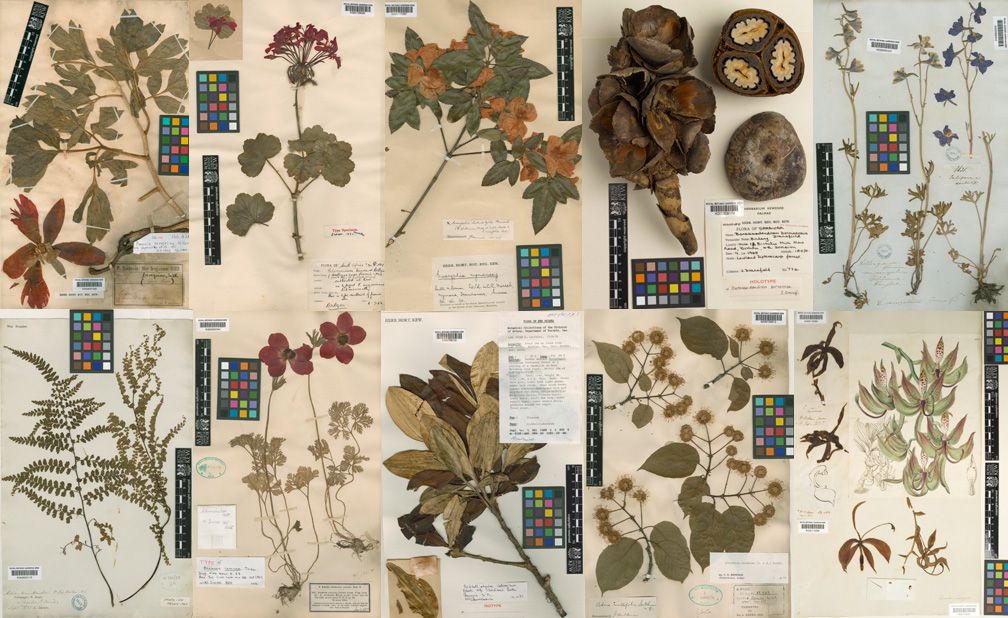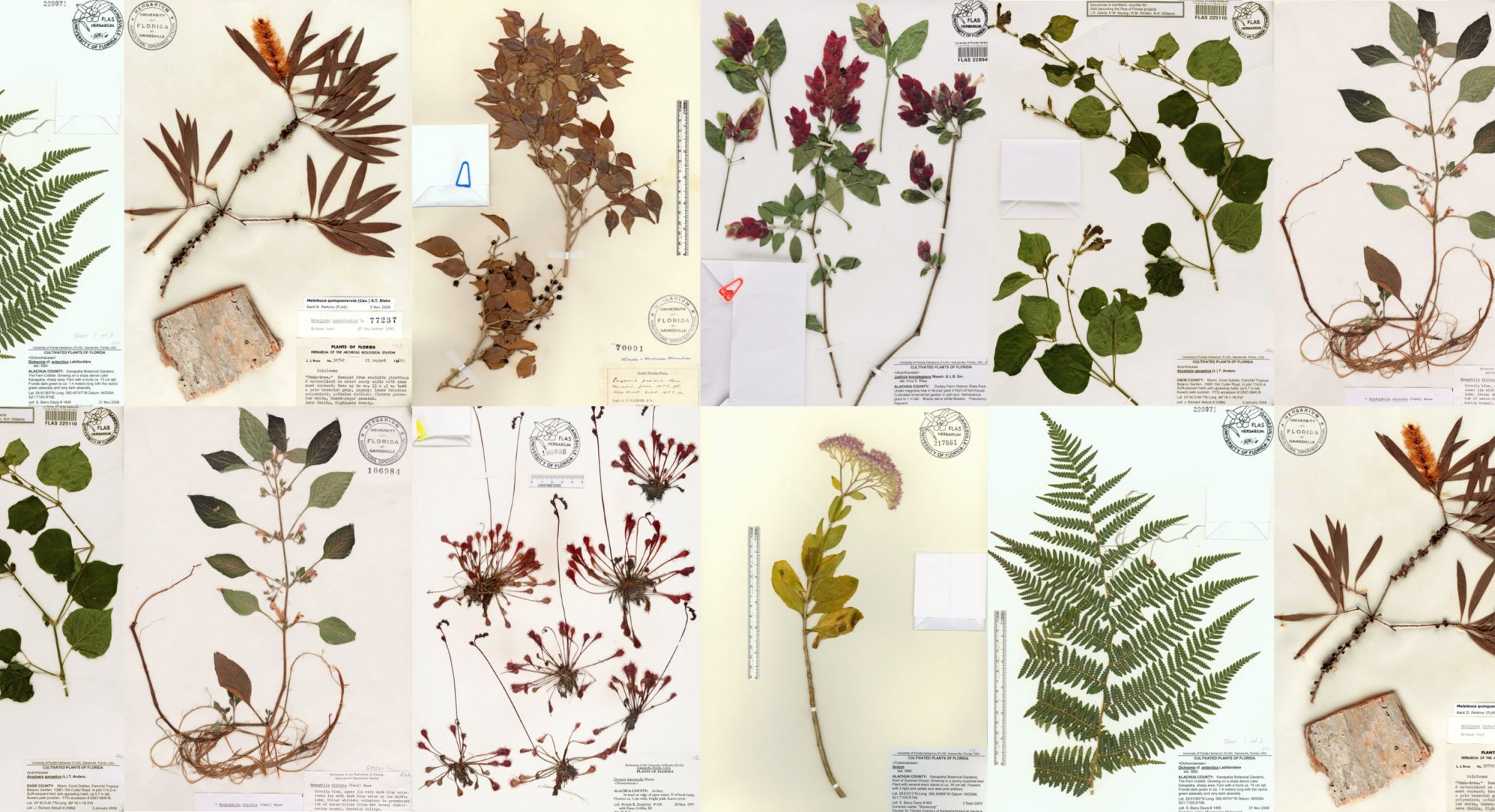Herbaria play a crucial role in the field of botany and plant sciences. These specialized collections of preserved plant specimens provide a wealth of valuable information for researchers, educators, and conservationists.
In this article, we will explore the significance of Herbaria, their historical context, the techniques involved in creating and maintaining them, and their diverse applications in modern scientific research.
Historical Background of Herbaria
The Origins of Herbaria have a long history that dates back to ancient civilizations. The earliest known records of plant specimens being preserved come from ancient Egypt, where plants were pressed and stored for medicinal and religious purposes. The Greek philosopher Theophrastus is often regarded as the father of botany and plant classification, and he created one of the earliest known collections of dried plants. The Renaissance and the Emergence of Modern Herbaria During the Renaissance, interest in botany and plant classification grew, leading to the establishment of more systematic herbarium collections. Scholars like Leonhart Fuchs and Andrea Cesalpino made significant contributions to botanical knowledge by creating Herbaria and developing early classification systems. The Evolution of Herbarium Techniques Herbarium techniques have evolved over time, from simple drying and pressing of plant specimens to more sophisticated methods that ensure the long-term preservation of samples. The introduction of modern herbarium cabinets, climate-controlled environments, and digital imaging has revolutionized how Herbaria functions and contribute to scientific research.
Importance and Significance of Herbaria
Herbaria serves as a critical resource for plant identification and taxonomy. Botanists can compare specimens with known species to determine their identity, discover new species, and understand the relationships between different plant groups. Herbaria plays a vital role in conservation efforts by documenting plant diversity and distribution over time. They provide valuable data for assessing the impact of environmental changes, identifying endangered species, and guiding conservation strategies. Historical and Ecological Studies Herbarium specimens can offer insights into historical and ecological changes. By examining older specimens, researchers can study how plant populations have shifted, which is crucial for understanding past ecosystems and predicting future trends. Herbaria contributes to pharmaceutical and medicinal research by providing a repository of plant samples that have been traditionally used for medicinal purposes. Scientists can analyze these specimens to identify potential bioactive compounds and develop new drugs.
Herbarium Techniques
Herbarium techniques are a set of specialized procedures used to collect, preserve, and maintain plant specimens in Herbaria. These techniques are crucial to ensure the longevity and scientific value of the preserved plants. Properly collected and preserved specimens serve as invaluable resources for researchers, botanists, taxonomists, ecologists, and other plant-related disciplines. Let’s delve deeper into the key herbarium techniques:
Collecting Plant Specimens The process of building a herbarium collection begins with the collection of plant specimens from their natural habitats. Botanists and field collectors must follow ethical guidelines to ensure that their actions do not harm the plant populations or their ecosystems. Some important considerations during collection include: Documentation: Each collected specimen should be accompanied by detailed documentation, including the plant’s location (latitude and longitude), altitude, habitat description, date of collection, and the name of the collector. Proper documentation is essential for accurate identification and future reference. Selective Sampling: Collectors should be mindful of the impact of their actions and avoid over collecting rare or threatened species. Selective sampling ensures that a diverse representation of the plant population is preserved while minimizing disturbance to natural habitats. Plant Health: Only healthy and representative specimens should be collected, avoiding damaged or diseased plants that may not accurately represent the species.
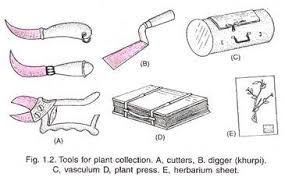
Pressing and Drying The collected plant specimens need to be pressed and dried to remove excess moisture, preventing decay and ensuring that the plants retain their original shape and characteristics. The pressing and drying process involves the following steps: Pressing: Specimens are carefully placed between sheets of absorbent paper, such as blotting paper or newsprint. The plant’s leaves, flowers, and other structures are arranged to display their natural form. The specimens are then placed in a plant press, which consists of wooden boards held together by straps or screws, allowing even pressure to be applied. Drying: The press containing the specimens is kept in a warm, dry, and well-ventilated area. The drying process can take several days to a few weeks, depending on the plant’s thickness and moisture content. Regular checks are made to ensure the specimens are adequately drying and to replace the moist paper as needed.

Mounting and Labeling Once dried, the pressed specimens are mounted on herbarium sheets, which are typically heavy-duty, acid-free paper. Proper mounting ensures that the plants remain flat and intact for long-term preservation. The mounting and labeling process includes: Mounting: The dried plant specimen is carefully arranged on the herbarium sheet, and glue or archival tape is used to secure it in place. The placement should be consistent and follow standard herbarium practices, such as displaying leaves, flowers, and fruits in a way that facilitates identification. Labeling: Each herbarium sheet includes a label containing essential information about the collected plant, such as the scientific name (binomial nomenclature), family, locality, altitude, collector’s name, collection date, and habitat details. The label is typically printed or written in archival ink to ensure longevity.
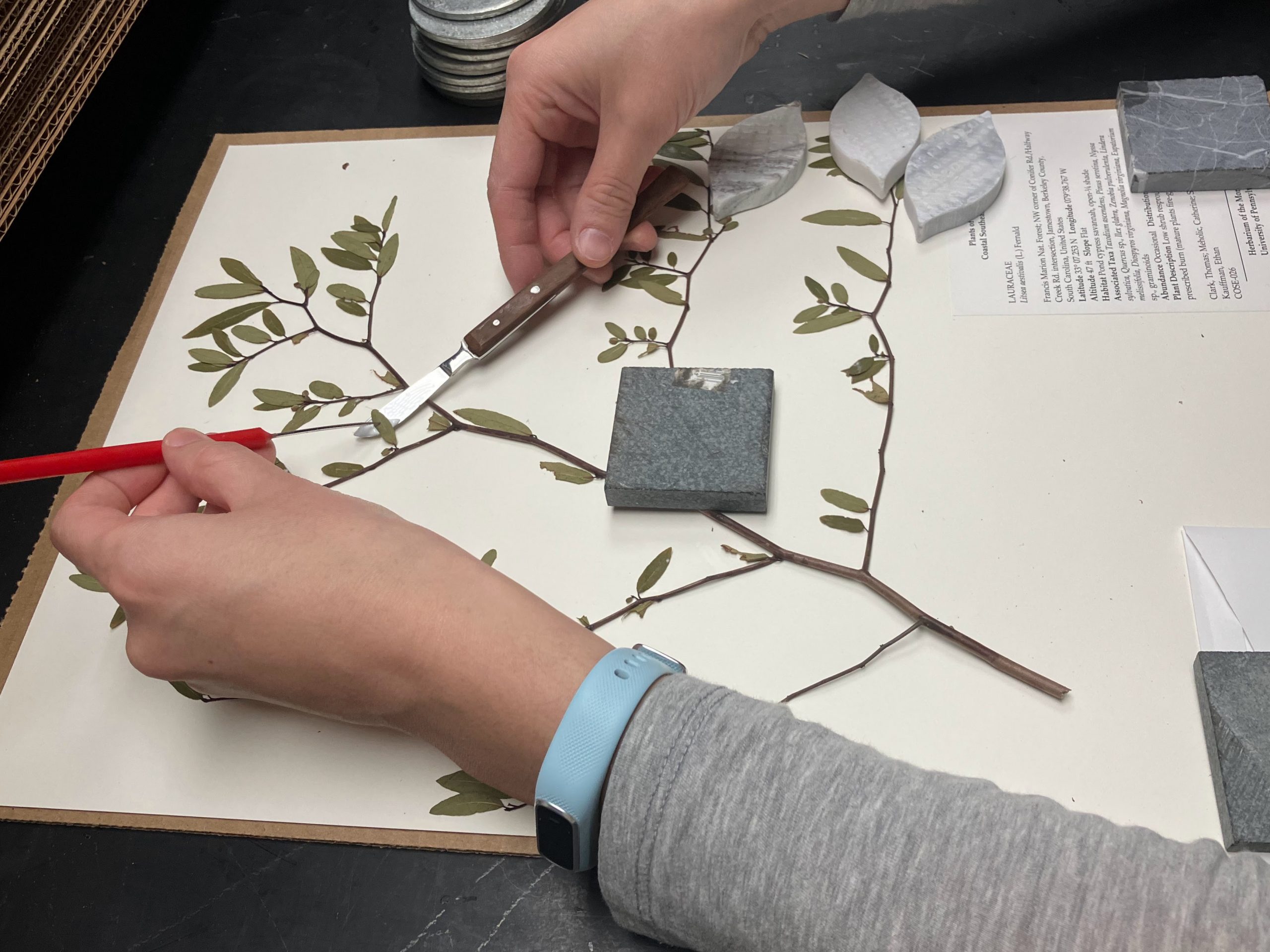
Storage and Preservation Proper storage and preservation are critical to maintaining the quality and scientific value of herbarium specimens. Herbaria employ specific storage methods to protect the specimens from environmental factors that could cause damage or decay: Herbarium Cabinets: Specimens are stored in specialized herbarium cabinets that provide a controlled environment. The cabinets are designed to protect the specimens from light, pests, fluctuations in temperature, and humidity. Cabinets are usually organized taxonomically or geographically for easy access and management. Climate Control: Maintaining a stable environment within the herbarium is essential. Temperature and humidity should be controlled to prevent the growth of mold or insect infestations. Generally, the recommended conditions for herbarium storage are around 20°C (68°F) and 40-50% relative humidity. Pest Prevention: Herbaria employ various methods to prevent pest infestations, such as using naphthalene balls or freezing the specimens periodically to eliminate any potential pests.
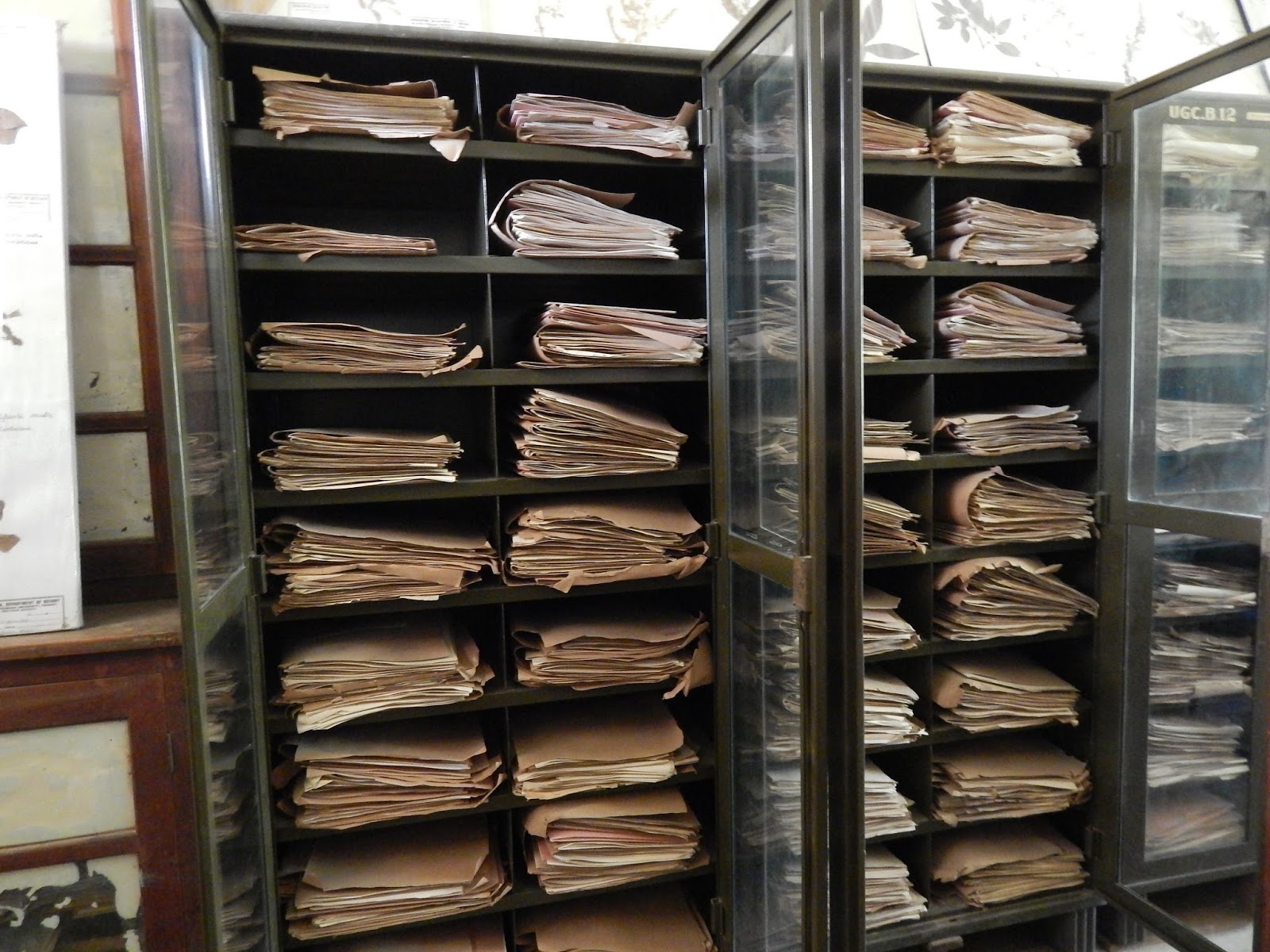
Digital Imaging and Data Management Modern herbaria often employ digital imaging techniques to create virtual duplicates of the specimens. High-resolution photographs capture detailed features of the plants, allowing researchers to study the specimens without physically handling them. Digital records are also useful for data management and sharing with other institutions and researchers, promoting collaboration and scientific exchange. Overall, herbarium techniques play a fundamental role in creating and maintaining botanical collections that provide a wealth of knowledge about plant diversity, distribution, evolution, and ecological changes over time. These techniques ensure that herbaria continue to be essential resources for scientific research, conservation efforts, and education in the field of botany and plant sciences.
Contemporary Applications of Herbaria
- Climate Change Research Herbarium specimens provide historical records of plant distributions, allowing researchers to track shifts in plant ranges over time and assess the impact of climate change on flora.
- Invasive Species Management Herbarium collections aid in identifying and managing invasive plant species, providing valuable insights into their introduction and spread.
- Evolutionary Studies Herbaria contribute to understanding plant evolution by allowing researchers to study morphological and genetic changes in plant species over time.
- Citizen Science Initiatives Herbaria often collaborate with citizen science projects, involving the public in collecting plant specimens and contributing to scientific knowledge.
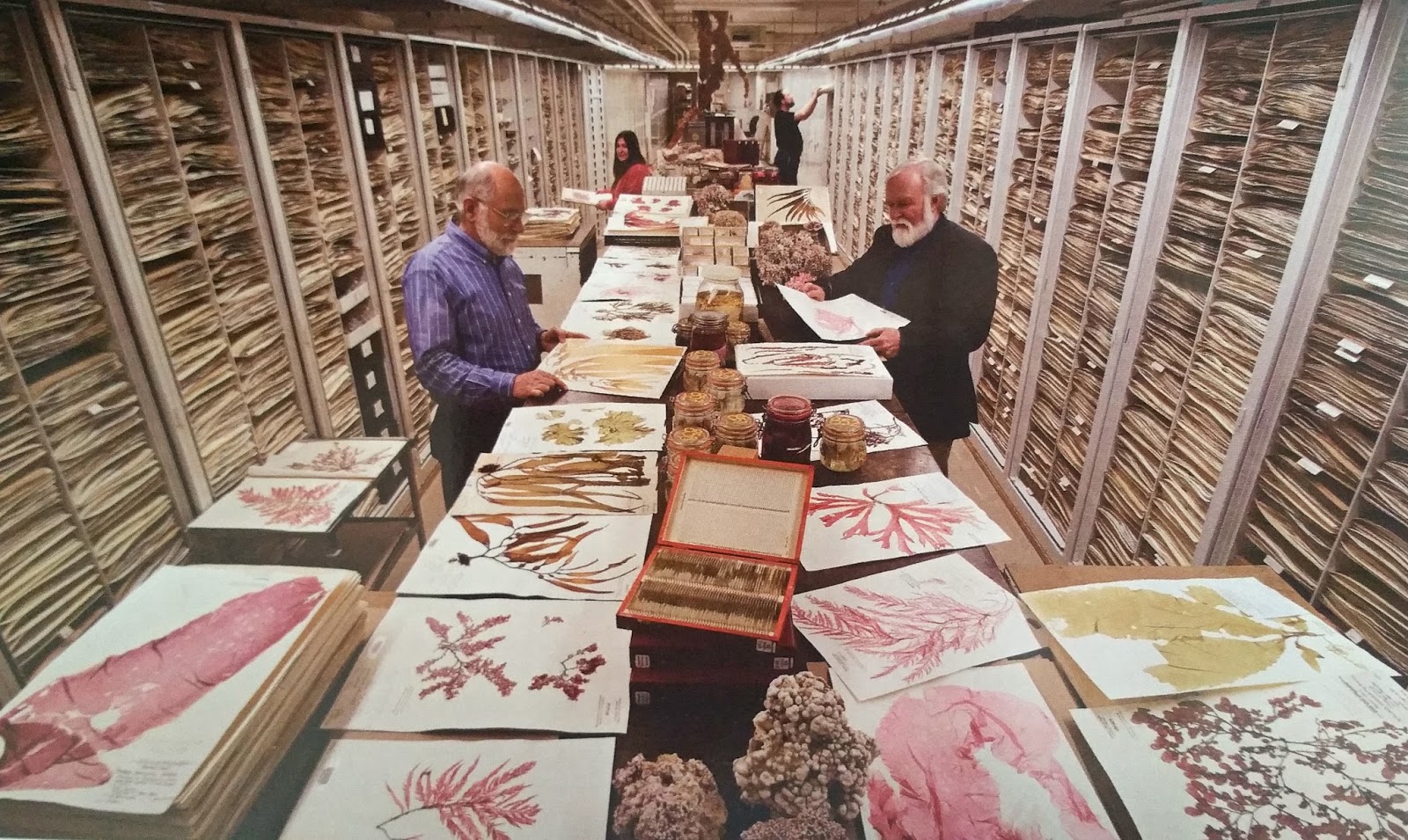
Herbaria are invaluable resources that continue to be at the forefront of botanical research, conservation efforts, and plant-related studies. The careful techniques employed in collecting, preserving, and documenting plant specimens ensure that these collections remain vital for generations to come, offering insights into the natural world and its changing dynamics. As technology and scientific methodologies advance, Herbaria will undoubtedly continue to play an essential role in shaping our understanding of plant life and its significance in our ecosystem.
References :
- Das, A. P. (2021). Herbarium technique. ResearchGate. https://www.researchgate.net/publication/349640811_Herbarium_Technique
- Heberling, J. M., Prather, L. A., & Tonsor, S. J. (2019). The Changing Uses of herbarium data in an Era of Global Change: An overview using Automated content analysis. BioScience, 69(10), 812–822. https://doi.org/10.1093/biosci/biz094
- Figueira, R., & Lages, F. (2019). Museum and Herbarium Collections for Biodiversity Research in Angola. In Springer eBooks (pp. 513–542). https://doi.org/10.1007/978-3-030-03083-4_19
- Carranza-Rojas, J., Goëau, H., Bonnet, P., Mata-Montero, E., & Joly, A. (2017). Going deeper in the automated identification of Herbarium specimens. BMC Evolutionary Biology, 17(1). https://doi.org/10.1186/s12862-017-1014-z
Image Courtesies : Featured Image : http://bitly.ws/LYko Content Image 1 :http://bit.ly/3qvaBtc Content Image 2:https://bit.ly/3KHTZFn Content Image 3:http://bitly.ws/RVLf Content Image 4:http://bitly.ws/RVL7 Content Image 5: http://bitly.ws/RVKZ Content Image 6: http://bitly.ws/RVLA Content Image 7 : http://bitly.ws/RVMf

